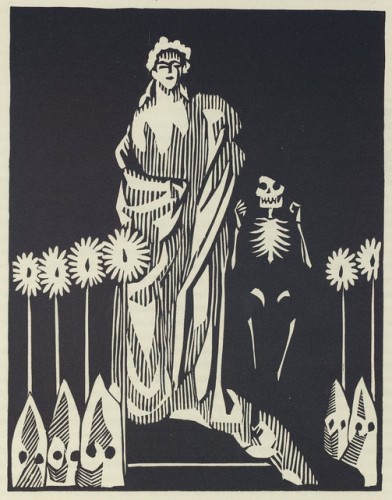
Back in 2008 neuropsychiatrist Peter Fenwick, in his book The Art of Dying, made this observation: ‘There are plenty of papers about palliative care and pain control, but very few about the mental states during the dying process.’
It’s something that’s often discussed, the un-joined-upness of dying and death, even in hospices. The National Council for Palliative Care (NCCP) has addressed it in a new booklet, The Missing Piece. I guess there’s a pun in there somewhere. At just 17 pages it covers a lot of ground and is written with admirable clarity. It’ll cost you a tenner, and I think that’s a lot. It’s good value, all the same.
It defines the problem: ‘There is a piece of work to do on meeting the spiritual needs of those approaching the end of life, their carers and families.’ I prefer ‘dying’ to all that ‘approaching the end’ stuff. But palliative care is still awash with this sort of language – ‘life-limiting illness’ for example.
It attempts a definition of spiritual needs – a tricky thing to do. It discusses appropriate language with which to support (not care for) the dying. It talks about psychological pain as distinct from physical pain, for all that psychological pain may express itself physically. It acknowledges both that “There is a danger of medicalising pyschoogical or spiritual pain,” and that “nurses can have difficulty with … addressing concepts of spirituality.”
It acknowledges also the beneficial buying cialis pill online influence of the Liverpool Care Pathway, but notes poor levels of documentation. It considers (with a nod to Big Society theory) what ‘compassionate communities’ can do to offer support and takes into account the potential for well-meaning bungling.
As it goes forward with its work in this area, the NCPC says it welcomes comments and questions, and gives an email address.
Will it cover the ground that Peter Fenwick says it ought? Well, the NCPC booklet makes no reference to ELEs, end-of-life experiences, which Fenwick calls ‘ellies’ – deathbed visions and coincidences, and other phenomena beyond scientific explanation (for now, anyway). These are well known to carers for the dying and it is regrettable that the NCPC is shying away from them. As Fenwick says, “many carers feel that they are ill equipped to respond adequately.”
Here’s an example of what Fenwick means. It’s what he’d call a ‘take-away vision’ when a dying person behaves, at the point of death, as if someone was coming for them. A woman describes her husband’s death:
He was going unconscious. When I looked at him, he was looking fixedly at something in front of him. A smile of recognition spread slowly over his face as if he was greeting someone. Then he relaxed peacefully and died.
You can get the NCPC booklet here.
And you can buy Peter Fenwick’s book here. I really can’t recommend it highly enough.


I can whole-heartedly second Charles’ recommendation of Fenwick’s book! A rare thing from a psychiatrist.
I think the ‘normalising’of death has spilt over into fashion too. The amount of sculls/demon-type creatures is striking! Even in baby boutiques! Maybe we are all being gently groomed towards a soilent green era.
Sorry if this sounds nasty and off topic, just my 2 cents.
This sounds like an exellent read wether someone is in the funeral industry or not, thanks for yet more good information.
Sonya